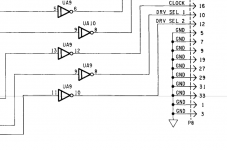I have an Osborne 1 that I purchased sometime last year, and it was working great until one day it stopped booting. Inspecting the original floppy controller it looked quite dirty (overheating?) and I managed to source two new floppy controller chips and tried both (on the odd chance that they both had issues).
As of now:
I feel that I've ruled out a bad controller, and the physical drive, since it boots fine from B: drive regardless of the physical drive that is there.
Any ideas where else I can look?
Thanks,
-10d
As of now:
- System has the double density add-on board
- System turns on, and boots from Drive B (using shift-quote to boot from second drive)
- I have tried two new floppy controllers, issue persists
- I have swapped the physical drives, and the problem persists
I feel that I've ruled out a bad controller, and the physical drive, since it boots fine from B: drive regardless of the physical drive that is there.
Any ideas where else I can look?
Thanks,
-10d


